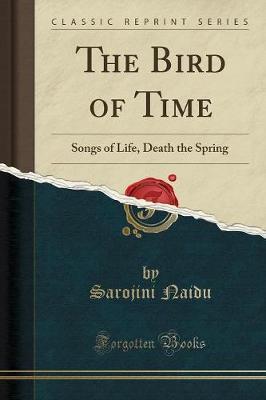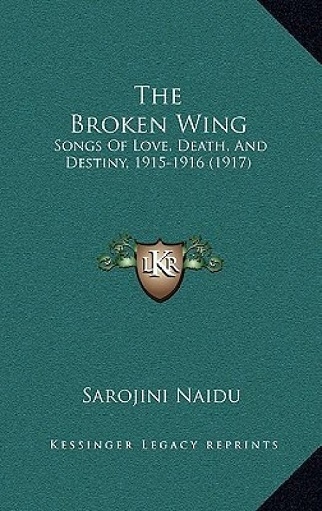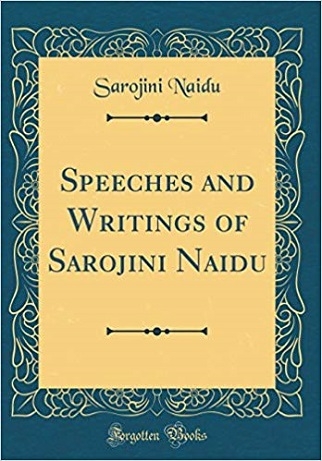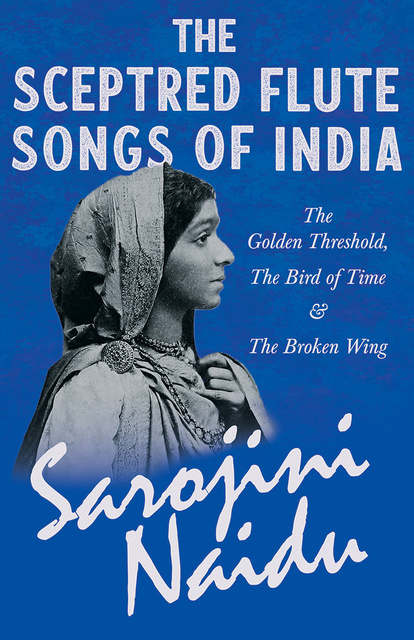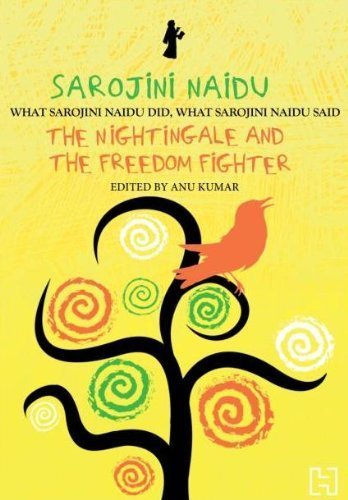Overview :
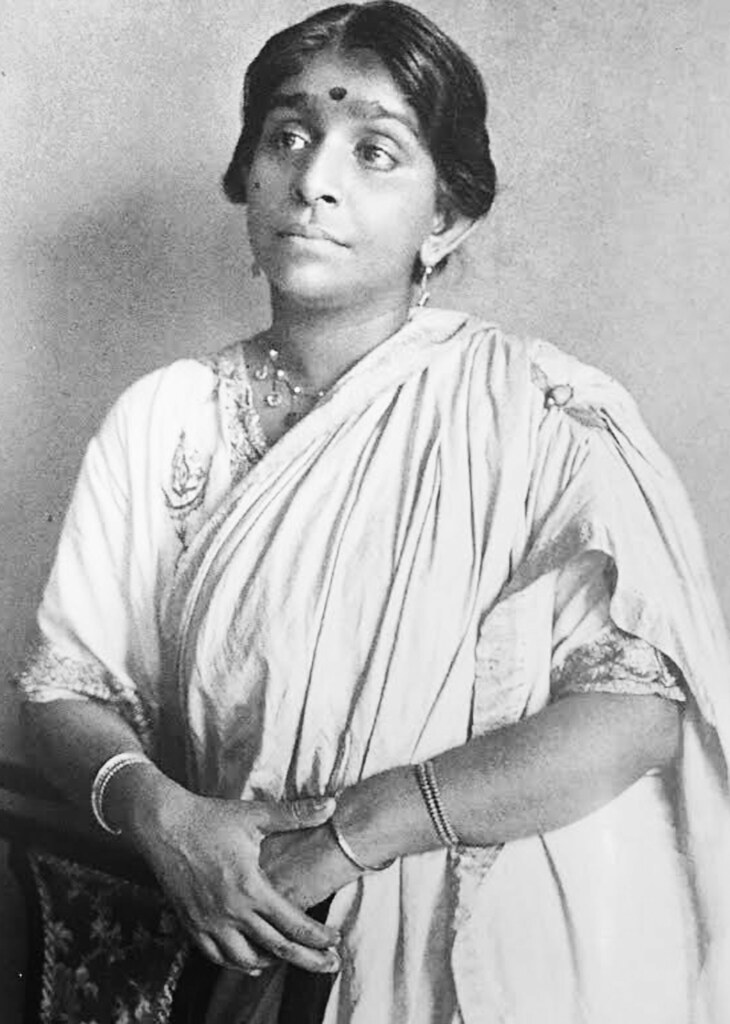
Sarojini Naidu (13th February 1879 – 2nd March 1949) was an Indian political activist and poet. A proponent of civil rights, women's emancipation, and anti-imperialistic ideas, she was an important figure in India's struggle for independence from colonial rule. Naidu's work as a poet earned her the sobriquet 'the Nightingale of India', or 'Bharat Kokila' by Mahatma Gandhi because of colour, imagery and lyrical quality of her poetry. She was known for her vivid use of rich sensory images in her writing, and for her lush depictions of India. She was well-regarded as a poet, considered the "Indian Yeats". She died of a cardiac arrest on 2 March 1949.
Author Portfolio :
Naidu began writing at the age of 12. Her play, Maher Muneer, written in Persian, impressed the Nizam of Kingdom of Hyderabad. Her poetry includes both children's poems and others written on more serious themes including patriotism, romance, and tragedy. Published in 1912, "In the Bazaars of Hyderabad" remains one of her most popular poems.
Naidu's poetry is written in English, and usually took the form of lyric poetry in the tradition of British Romanticism, which she was sometimes challenged to reconcile with her Indian nationalist politics. Her first book of poems was published in London in 1905, titled The Golden Threshold. The publication was suggested by Edmund Gosse, and bore an introduction by Arthur Symons. It also included a sketch of Naidu as a teenager, in a ruffled white dress, drawn by John Butler Yeats. Her second and most strongly nationalist book of poems, The Bird of Time, was published in 1912. It was published in both London and New York, and includes "In the Bazaars of Hyderabad". The last book of new poems published in her lifetime, The Broken Wing (1917) was dedicated to Muhammad Ali Jinnah. It includes the poem "The Gift of India", critiquing the British empire's exploitation of Indian mothers, which she had previously recited to the Hyderabad Ladies' War Relief Association in 1915. It also includes "Awake!", with which she concluded a 1915 speech to the Indian National Congress to urge unified Indian action. A collection of all her published poems was printed in New York in 1928. After her death, Naidu's complete poems, including unpublished works, were collected in The Feather of the Dawn (1961), edited by her daughter Padmaja Naidu.
Naidu's speeches were first collected and published in January 1918 as The Speeches and Writings of Sarojini Naidu, a popular publication which led to an expanded reprint in 1919 and again in 1925.
Life Styles :
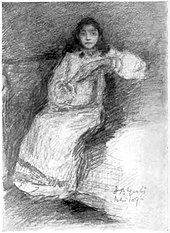
1896, from the frontispiece of
The Golden Threshold
Sarojini Chattopadhyay was born in Hyderabad State on 13 February 1879 to Aghorenath Chattopadhyay and Varada Sundari Devi. Her parental home was at Brahmangaon Bikrampur, Dhaka, Bengal province (present-day Konoksar village, Louhajang, Munshiganj Bangladesh). Her father was a Bengali Brahmin and the principal of Hyderabad college, which later became Nizam College. He held a doctorate of Science from Edinburgh University. Her mother wrote poetry in Bengali.
Chattopadhyay passed her matriculation examination to qualify for university study, earning the highest rank, in 1891, when she was twelve. From 1895 to 1898 she studied in England, at King's College, London and then Girton College, Cambridge, with a scholarship from H.E.H. the Nizam's Charitable Trust founded by the 7th Nizam of Hyderabad "Mir Osman Ali Khan". In England, she met artists from the Aesthetic and Decadent movements. She travelled briefly in Europe.
Chattopadhyay returned to Hyderabad in 1898. That same year, she married Govindarajulu Naidu, a physician, in an inter-caste marriage which has been called "groundbreaking and scandalous". Both their families approved their marriage, which was long and harmonious. They had five children. Their daughter Padmaja also joined the Quit India Movement, and she held several governmental positions in independent India.
Beginning in 1904, Naidu became an increasingly popular orator, promoting Indian independence and women's rights, especially women's education. Her oratory often framed arguments following the five-part rhetorical structures of Nyaya reasoning. She addressed the Indian National Congress and the Indian Social Conference in Calcutta in 1906. Her social work for flood relief earned her the Kaisar-i-Hind Medal in 1911, which she later returned in protest over the April 1919 Jallianwala Bagh massacre. She met Muthulakshmi Reddy in 1909, and in 1914 she met Mahatma Gandhi, whom she credited with inspiring a new commitment to political action. She was the second woman President of the Indian National Congress and first indian woman to preside over the INC conference.
With Reddy, she helped established the Women's Indian Association in 1917. Later that year, Naidu accompanied her colleague Annie Besant, who was the president of Home Rule League and Women's Indian Association, to advocate universal suffrage in front of the Joint Select Committee in London, United Kingdom. She also supported the Lucknow Pact, a joint Hindu–Muslim demand for British political reform, at the Madras Special Provincial Council. As a public speaker, Naidu's oratory was known for its personality and its incorporation of her poetry.
Popular Works :
| English Title | Genre | Year | Publishing House |
|---|---|---|---|
| The Golden Threshold | Poem | 1905 | William Heineman |
| The Bird of Time | Poem | 1912 | William Heineman |
| The Song of the Palanquin Bearers | Song | 1917 | Curwen |
| The Sceptred Flute | Poem | 1928 | Dodd, Mead & Co. |
| The Feather of the Dawn | Poem | 1961 | Asia Publishing House |
| In the Bazaars of Hyderabad | Poem | 1912 | William Heineman |
| The Broken Wing | Poem | 1917 | John Lane Company |
